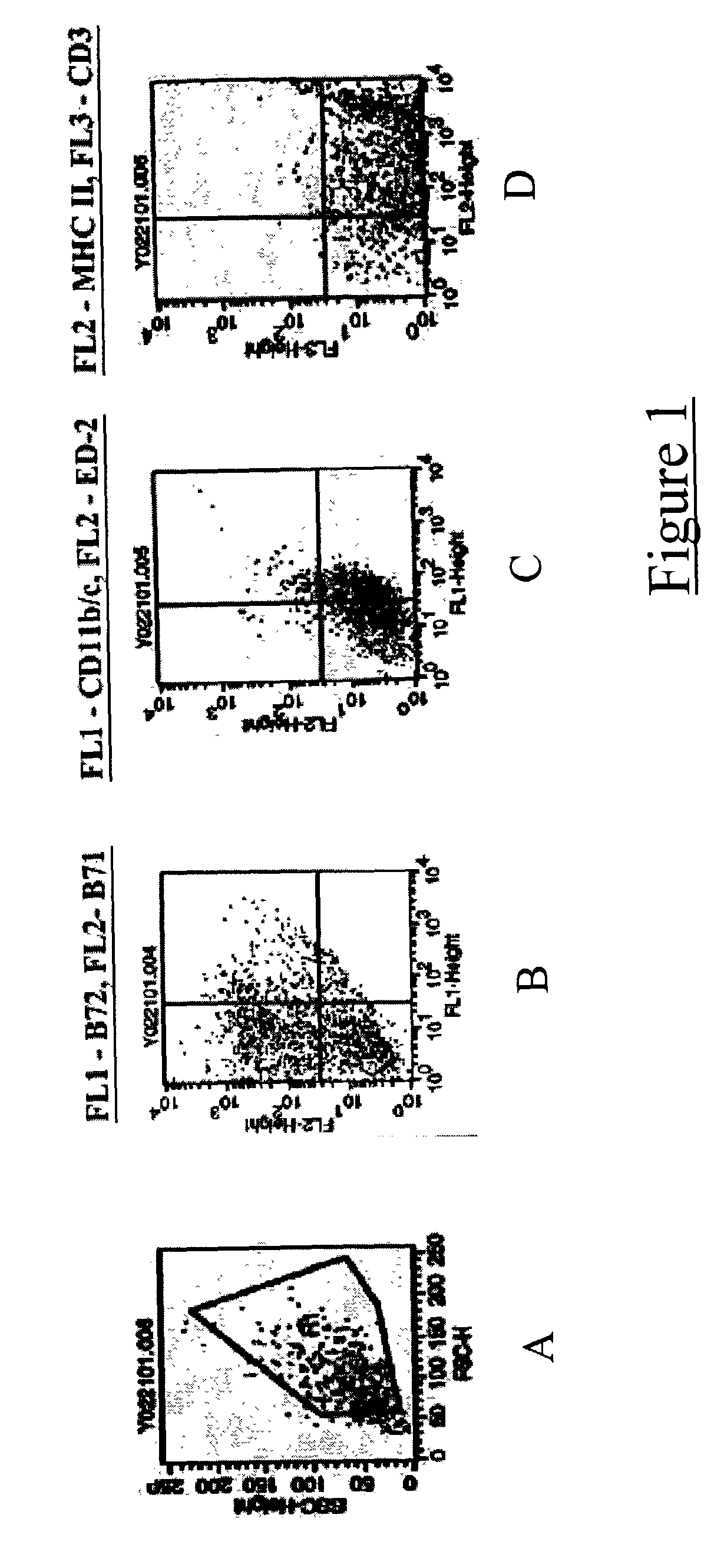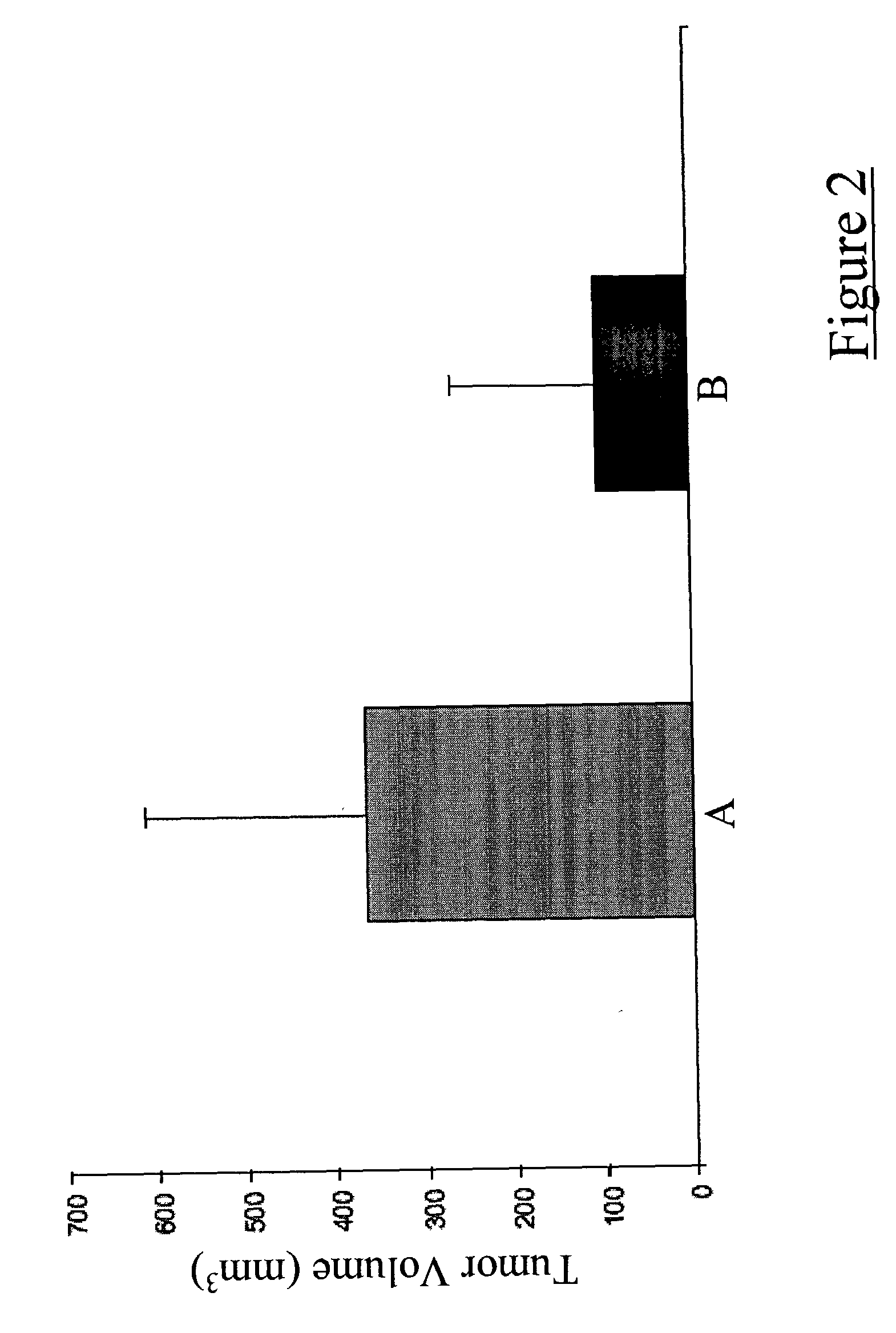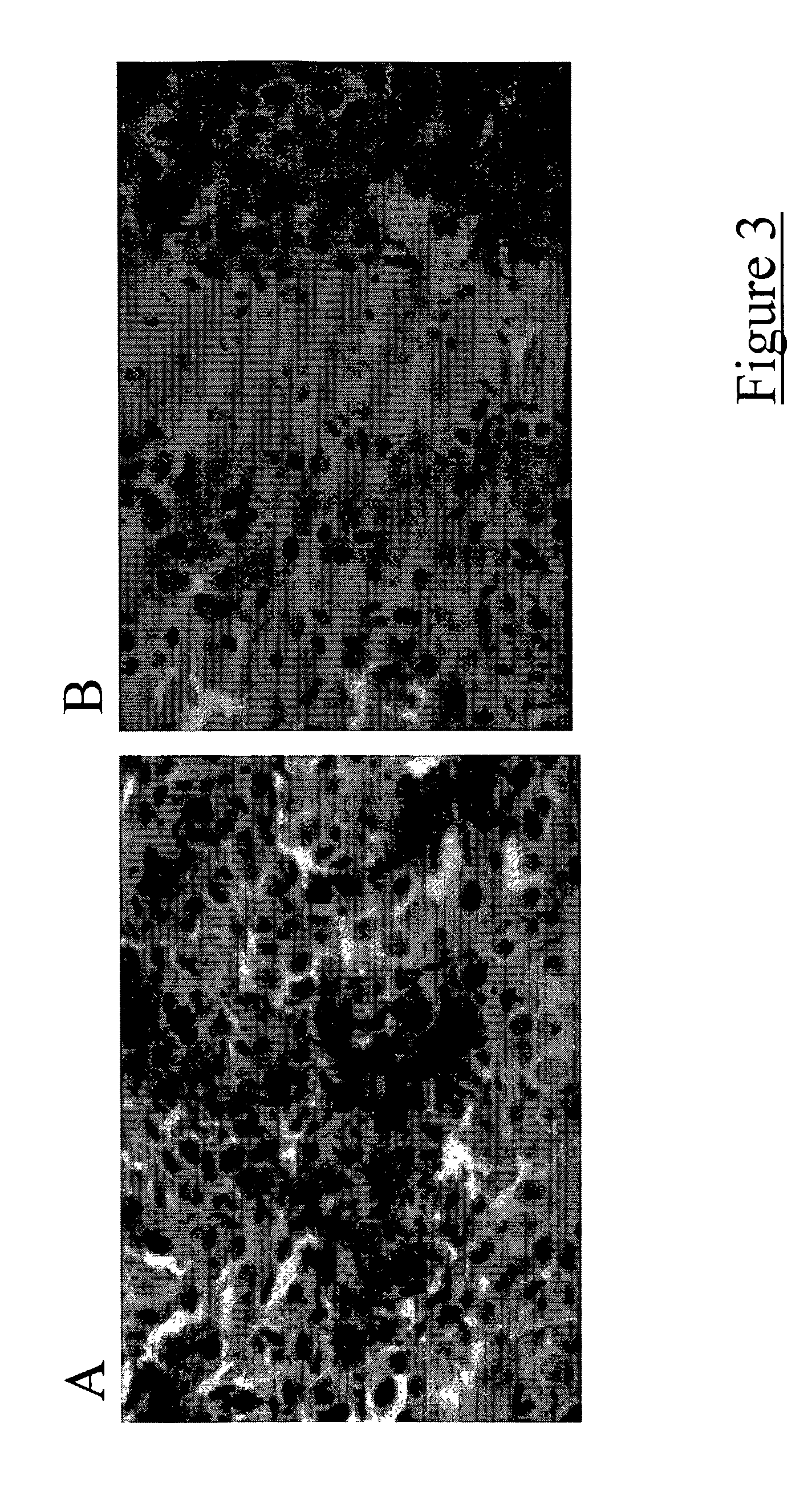Intratumoral delivery of dendritic cells
a dendritic cell and intravenous technology, applied in the direction of vertebrate antigen ingredients, biocide, antibody medical ingredients, etc., can solve the problems of inability to treat brain tumors in a single treatment, inconvenient treatment, and a large number of brain tumors, so as to reduce the severity of the complications, prevent the tumor from manifesting, and reduce the mass and/or size
- Summary
- Abstract
- Description
- Claims
- Application Information
AI Technical Summary
Benefits of technology
Problems solved by technology
Method used
Image
Examples
example 1
Intracranial Dendritic Cell Vaccination of Brain Tumors
[0037] Bone marrow was harvested from the femurs and tibias of adult Fisher rats. Cells were plated in 24 well plates at a density of 1 million cells per well in RMPI 1640 medium (obtained from Gibco BRL; Gaithersburg, Md.; hereinafter "Gibco") in media containing GM-CSF and IL-4 (both available from R and D Systems; Minneapolis, Minn.; hereinafter "R and D"). Media was partially replenished every three days. After eight days, clusters of enlarged floating / partially adherent dendritic cells were apparent. These cells were collected separately and their phenotypic profiles assessed using flow immunocytometry. They were positive for MHC class II and B7 co-stimulatory molecules; thereby confirming that the cells were dendritic in nature (FIG. 1).
example 2
Dendritic Cells Inhibit Tumor Growth when Inoculated Intratumorally
[0038] Dendritic cells were inoculated subcutaneously along with a mixture of irradiated and viable 9L glioma cells into the dorsum of the right foot of adult Fisher rats. Two weeks following this procedure, a second dose of dendritic cells was inoculated into each growing tumor. Eight weeks following the second dendritic cell vaccination, tumor sizes were measured using a precision caliper. Tumors were markedly smaller in animals that had received intratumoral dendritic cell vaccinations as compared to the control animals that received only saline inoculations (FIG. 2).
example 3
Dendritic Cell Vaccination Induces Immune Cell (T-cell) Infiltration into Brain Tumors
[0039] Dendritic cells were inoculated intracranially along with a mixture of irradiated and viable 9L glioma cells into the right corpus striatum (basal ganglia) of adult Fisher rats. Two weeks following this procedure, a second dose of dendritic cells was inoculated into each growing tumor. Two weeks following the second dendritic cell vaccination, animals were euthanized and their brains harvested. The brains were immediately frozen and sectioned on a cryostat (available from Janis Research Company, Inc.; Wilmington, Mass.). Slide mounted sections were stained for T-cell markers (i.e., CD4 and CD8). Tumors from dendritic cell vaccinated animals displayed increased quantities of infiltrating T-cells as compared to tumors from control animals that received only saline inoculations (FIG. 3).
PUM
| Property | Measurement | Unit |
|---|---|---|
| Time | aaaaa | aaaaa |
| Volume | aaaaa | aaaaa |
Abstract
Description
Claims
Application Information
 Login to View More
Login to View More - R&D
- Intellectual Property
- Life Sciences
- Materials
- Tech Scout
- Unparalleled Data Quality
- Higher Quality Content
- 60% Fewer Hallucinations
Browse by: Latest US Patents, China's latest patents, Technical Efficacy Thesaurus, Application Domain, Technology Topic, Popular Technical Reports.
© 2025 PatSnap. All rights reserved.Legal|Privacy policy|Modern Slavery Act Transparency Statement|Sitemap|About US| Contact US: help@patsnap.com



